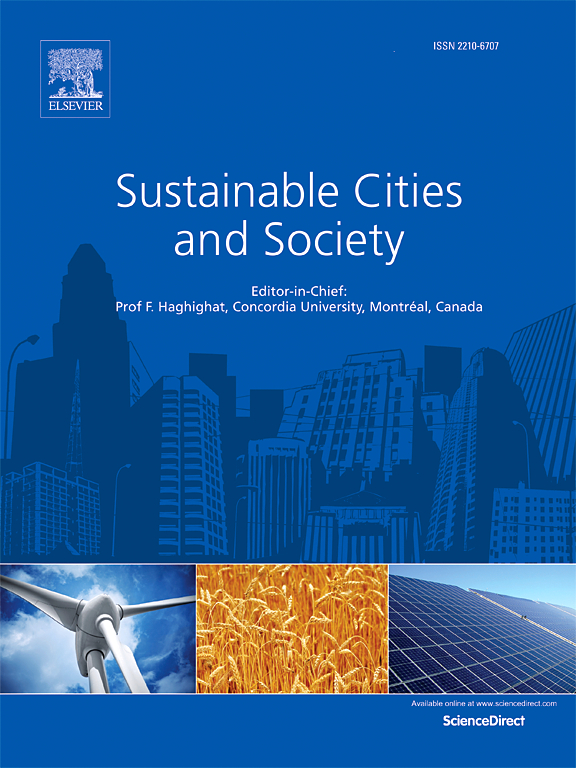Assessing the space-use efficiency of French cities by coupling city volumes with mobile data traffic
IF 10.5
1区 工程技术
Q1 CONSTRUCTION & BUILDING TECHNOLOGY
引用次数: 0
Abstract
In light of climate change, resource scarcity, and population growth, it becomes increasingly important to use the existing built-up space of our cities efficiently. However, the degree to which the available three-dimensional (3D) urban space is actually being utilized by human activities has never been studied systematically at a high spatial and temporal resolution. Here, we explore the space-use efficiency across 20 major French cities, measured by the dynamic occupancy rates of their volumes. The occupancies (number of people present) are predicted by a random forest model trained on fine-grained mobile data traffic from 2019, while the urban volumes are derived from 3D city models. The results show a surprisingly common ‘donut-like’ organization of cities, where the space occupancy is low in the city center, becomes high in the immediate surroundings, and then low again in the suburbs. This hitherto hidden regularity is associated with the distribution of urban amenities and reveals a potential to increase the utilization of under-used spaces especially in the city centers.
求助全文
约1分钟内获得全文
求助全文
来源期刊

Sustainable Cities and Society
Social Sciences-Geography, Planning and Development
CiteScore
22.00
自引率
13.70%
发文量
810
审稿时长
27 days
期刊介绍:
Sustainable Cities and Society (SCS) is an international journal that focuses on fundamental and applied research to promote environmentally sustainable and socially resilient cities. The journal welcomes cross-cutting, multi-disciplinary research in various areas, including:
1. Smart cities and resilient environments;
2. Alternative/clean energy sources, energy distribution, distributed energy generation, and energy demand reduction/management;
3. Monitoring and improving air quality in built environment and cities (e.g., healthy built environment and air quality management);
4. Energy efficient, low/zero carbon, and green buildings/communities;
5. Climate change mitigation and adaptation in urban environments;
6. Green infrastructure and BMPs;
7. Environmental Footprint accounting and management;
8. Urban agriculture and forestry;
9. ICT, smart grid and intelligent infrastructure;
10. Urban design/planning, regulations, legislation, certification, economics, and policy;
11. Social aspects, impacts and resiliency of cities;
12. Behavior monitoring, analysis and change within urban communities;
13. Health monitoring and improvement;
14. Nexus issues related to sustainable cities and societies;
15. Smart city governance;
16. Decision Support Systems for trade-off and uncertainty analysis for improved management of cities and society;
17. Big data, machine learning, and artificial intelligence applications and case studies;
18. Critical infrastructure protection, including security, privacy, forensics, and reliability issues of cyber-physical systems.
19. Water footprint reduction and urban water distribution, harvesting, treatment, reuse and management;
20. Waste reduction and recycling;
21. Wastewater collection, treatment and recycling;
22. Smart, clean and healthy transportation systems and infrastructure;
 求助内容:
求助内容: 应助结果提醒方式:
应助结果提醒方式:


